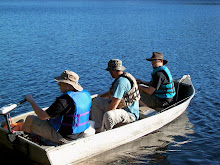Secondly, guns have got to do a LOT of damage. I'm thinking a d6 system with re-rolling all sixes over again, and adding it to the total. If you get another 6 keep going. I'm thinking of at least 3 classes of gun:
Light Pistol - 1d6
Pistol - 2d6
Long Arm - 3d6
Range and Accuracy - the GM could have a lot of fun tailoring this to his/her game. I'm thinking back to when guns were so inaccurate that soldiers in combat didn't really aim them, they just pointed them in the general direction and worried about reloading ASAP.
On the other hand, having a long arm with eye sights early in the campaign, and then equipping it with some expensive goblyn or gnome made sighting technology which is totally cumbersome but gives the user a 1/2 mile range with his rifle would be really fun to play out in a campaign. Obviously, the DM would want to impose huge costs on these sighting devices and also make the gun powder an expensive and limited resource - which would only lead to more adventuring.
Anyway, these rules aren't firm in my mind. Has anybody seen better rules?


Since the real advantage of guns BITD was their total disregard for armor, one thing I would consider doing is having guns ignore all but DEX and magical bonuses to AC. So, for instance, a character with a DEX bonus of +1 and plate mail +2 would only have a +3 AC bonus applied to AC 10 (or 9, if that's your system's unarmored AC).
ReplyDeleteAlso, have you looked at "Sturmgeschutz and Sorcery" from one of the old Strategic Review issues?
I have never read the Sturmgeschutz and Sorcery article. Can it be found on the net? I dig the idea of using the +'s from magical armor in addition to +'s from capes, or bracers, or rings, etc... I even thought that maybe 1/2 the armor class bonus for plate armors - but that is too much crunch for ODD.
ReplyDeleteAlso, monsters would have to be taken on a case-by-case basis by the GM. monsters relying on a hide AC bonus probably would be penalized. However, monsters relying on a dodge/evasion for their AC bonus would get their normal AC.
Also, really small and really large creatures might modify the attack roll. Huge and giant creatures should be easier to hit (hitting the side of a barn, in the parlance of our times) and tiny creatures should be really hard to hit with a ranged bullet or arrow. Again, each GM would probably want to implement his own system based on his judgement at the time.
"I have never read the Sturmgeschutz and Sorcery article. Can it be found on the net?"
ReplyDeleteYou can try this link. If that doesn't work, I might have a PDF of it for you.
Cool article. Do you know what the scale was for the combat? There are lots of inches listed for burst radius.
ReplyDeleteEverything is in inches but that must translate to feet or meters - this is probably something every grognard wargammer has in his mind like how to tie shoes, but I must confess, I have never wargamed.
It is probably all referenced to the size of their figures, maybe?
Anyway, it was very interesting that Gary set all small arms to 1d6. This is probably because most humans in this combat had 1-4HD it appears. I think for a D&D game where level increase is expected (characters ending the game around 12th level or higher) you might want to make all the weapons do more damage. The idea of multiple targeting for machine guns seems pretty slick. GURPS has rules for this also, but they are pretty complex if I remember right. I might try to dig them up so I can remember what they do for that. Gary's idea that you maybe randomly roll a die to hit all characters in a cone on the battlemap makes a lot of sense.
Well, I'm not a grognard by a long shot (only been wargaming for about 20 years, and not in "the old school" style) but I believe it's pretty standard nowadays that your chosen scale measurement (20mm, 25mm, 28mm, 40mm, 54mm, etc.) equates to roughly 5 or 6 scale feet.
ReplyDeleteI'm guessing the S&S game used the Chainmail rules for combat (I could be wrong). Unfortunately, I don't know where my PDF of Chainmail got too (or if it even indicates the scale), but I think Gygax and company preferred larger scales - 40mm maybe? (I have a sneaking suspicion, however, that they didn't use the standard 5' scale convention.)